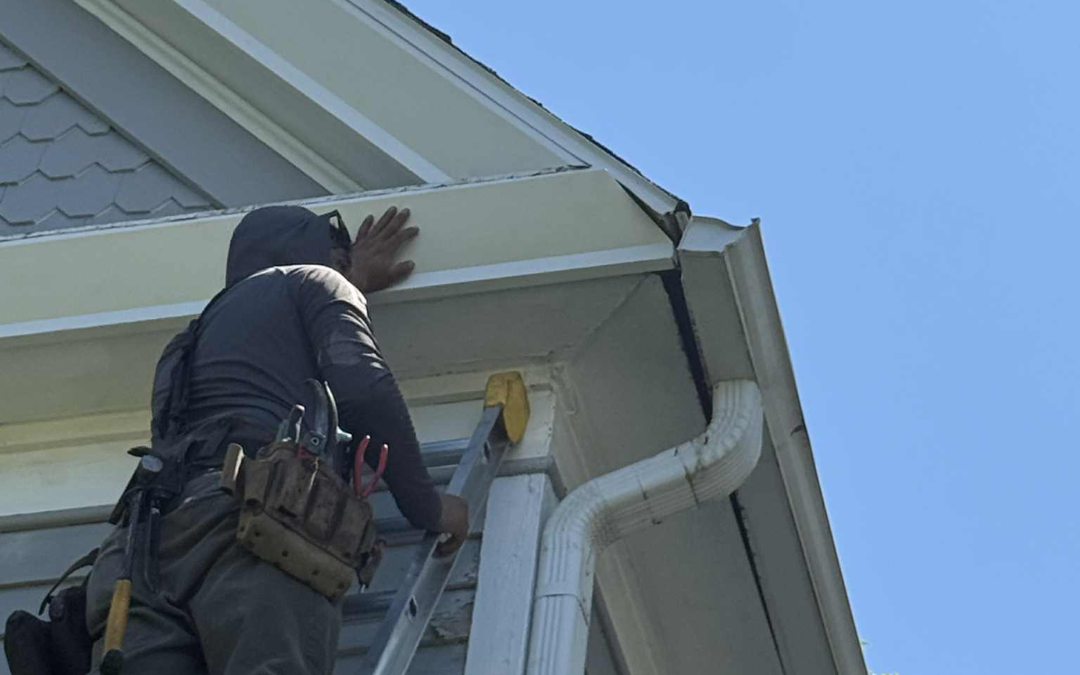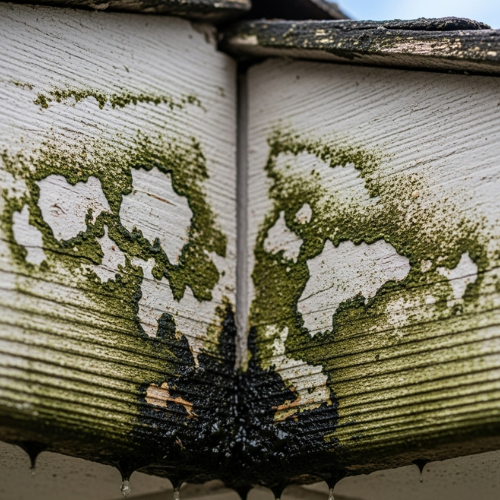5 Warning Signs Your Fascia Boards Need Replacing

How Do You Know When It’s Time for a Fascia Board Replacement?
Are you a homeowner who spends time checking the roof, the siding, or maybe even the porch, but rarely looks at the smaller details? Did you know there’s one part of your home that often gets overlooked, yet plays a big role in protecting everything else—the fascia boards. These boards sit right under the edge of your roof. They hold your gutters in place, keep water from sneaking into your roofline, and even help keep pests out. They might not grab attention like your windows or front door, but they work hard behind the scenes every single day.
On this blog, we’re going to talk about something important: how to know when your fascia boards are in trouble. Like everything else in your home, fascia boards don’t last forever. Sun, rain, and time can wear them down. The good news is, they usually show warning signs before things get worse. If you know what to look for, you can catch the problem early and save yourself from bigger repairs. Let’s walk through five clear signs your fascia boards may need replacing.
1. Rot and Decay
Rot is one of the biggest warning signs that your fascia boards need replacing. If you press on the boards and they feel soft, crumbly, or almost sponge-like, that’s rot starting to take over. Wood is strong when it’s dry, but once moisture sneaks in, it weakens quickly. A rotting board can’t hold your gutters in place, and it definitely won’t keep water out of your roofline.
The tricky part with rot is that it spreads fast. What looks like a small soft spot today can easily grow into a much bigger problem within weeks or months. Left alone, it can even affect nearby parts of your roof or siding. That’s why it’s always better to replace rotted boards right away instead of hoping they’ll hold up a little longer. Acting early saves you time, money, and stress in the long run.
2. Peeling or Flaking Paint
At first, peeling or flaking paint might look like nothing more than a cosmetic issue. But in reality, paint is like a protective jacket for your fascia boards. When it starts bubbling, chipping, or peeling off, that’s your sign that moisture has found its way in. Once the paint barrier is gone, the bare wood underneath is left exposed to rain, humidity, and sun damage.
Over time, this can lead to deeper problems like rot and splitting. Sometimes, if the wood is still in good condition, a new coat of paint can give your fascia boards more life. But if you notice soft spots under the peeling paint, it usually means the wood is already damaged. In that case, replacing the boards is the best option. Think of it as stopping the problem before it snowballs into something much bigger.
3. Sagging or Detaching Gutters
Your gutters are only as strong as the fascia boards holding them up. If you step back and notice they’re sagging, crooked, or pulling away from the house, your fascia may be to blame. Weak or rotting boards simply don’t have the strength to support the weight of gutters, especially when they’re full of rainwater or leaves.
The danger here goes beyond just the gutters looking uneven. When gutters aren’t sitting properly, they can’t do their job of directing water away from your home. Instead, water may spill over the sides, soaking your siding, pooling around your foundation, or even leaking into your roofline. These are all costly problems that can be avoided by replacing weak fascia boards. A solid board means a solid base for your gutters—and peace of mind for you.
4. Mould, Mildew, and Algae Growth
If you see dark streaks, green spots, or fuzzy patches on your fascia boards, that’s a sure sign of mould, mildew, or algae. These thrive in damp areas, which means your fascia boards are holding more moisture than they should. Besides looking unattractive, this kind of growth weakens the wood over time and can spread to other parts of your home if not dealt with.
Cleaning might help if the problem is caught early, but if the wood already feels soft or looks discolored underneath the mould, replacement is the safer option. On top of that, mould can cause musty smells and even affect the air quality around your home. Simply put, it’s not something to ignore. Replacing the boards will stop the growth and keep your roofline clean and healthy.
5. Pest Damage
Fascia boards that are cracked, rotting, or soft are like an open invitation for pests. Termites and carpenter ants can chew through weak wood, while birds and squirrels may try to nest in any gaps or openings. If you notice tiny holes, gnaw marks, or unusual critter activity near your roofline, pests may already be making themselves at home.
The problem is, once pests get in, they rarely stop at the fascia. They can move into your attic, damage insulation, and even work their way into the walls of your house. That’s when repairs become much more complicated—and expensive. Strong fascia boards act as a shield to keep these unwanted visitors out. If yours are showing signs of pest damage, it’s best to replace them before the problem gets worse.
Why It’s Important
Fascia boards may not be the first thing you notice, but they quietly do a lot to keep your home safe and sound. Here’s why they matter:
- They hold your gutters steady so rainwater goes where it should instead of spilling everywhere.
- They guard the edges of your roof from water damage and rot.
- They help keep pests and moisture from sneaking inside your home.
- They stop small issues from turning into big problems like leaks, sagging gutters, or unwanted critters.
- They save you money by catching trouble early before it grows into a costly repair.
Taking care of your fascia boards is a simple way to protect your home and avoid bigger headaches later on. A little attention now can go a long way in keeping everything strong, dry, and looking good.
Your fascia boards are one of those parts of the home that are easy to overlook, but they play a big role in keeping everything protected and working the way it should. When you start noticing signs like rot, peeling paint, sagging gutters, mould, or even pest activity, it usually means the boards are ready to be replaced. Taking care of the problem early is not just about fixing something that looks worn out, it is about preventing bigger issues that can affect your roof, your gutters, and even the inside of your home. The best part is that replacing fascia boards on time helps your home stay strong, keeps it looking neat, and saves you from costly repairs down the road. So next time you step outside, take a quick moment to look up at your roofline. That simple check could be the small step that keeps your home safe and sound for years to come.
Think your fascia boards need attention? Contact Lexington Gutters & Exterior and we’ll handle the work for you, so you can enjoy peace of mind knowing your home is protected.






0 Comments